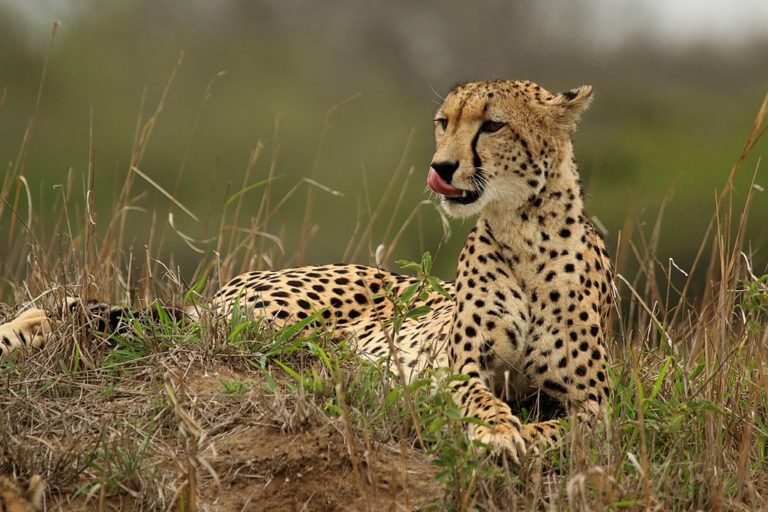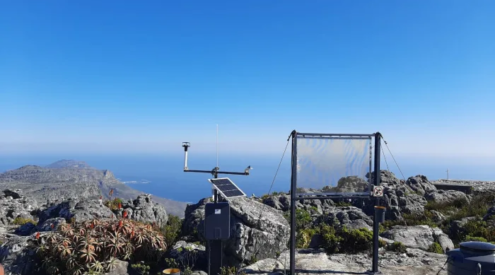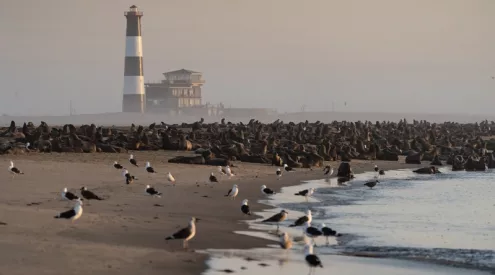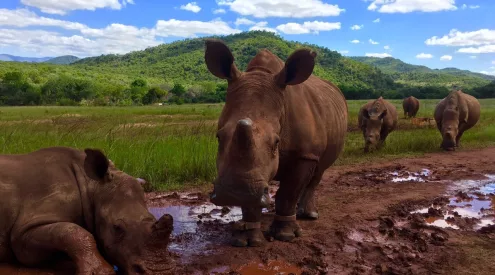When talking about endangered animals, those that often get media attention like rhinos and pangolin spring to mind but there are several others in South Africa.
The IUCN (International Union for the Conservation of Nature) has created a Red List on which they publish endangered animals from around the world that face human-induced threats to their survival daily.
Here are 10 endangered animals in South Africa, and ways you can contribute to their conservation.
1. Pickergill’s Reedfrog
Credit: Max Pixel
IUCN Red List status: Critically endangered
It’s easy to overlook an animal that is only 3cm long, but once you know of its existence, it’s hard not to care about its future. The Pickersgill’s reed frog is one of the most endangered amphibians in South Africa. It’s endemic to the coastline of KwaZulu-Natal where their numbers are shockingly low and vastly spread out along the coast.
Major threats?
Coastal development, habitat fragmentation, and draining of water used for agricultural and urban development.
Current conservation efforts?
Two of the wetland areas where they live are currently protected. South Africa’s very first captive breeding project for the conservation of a threatened amphibian species has included the Pickersgill’s reed frog. The project is run by the African Association of Zoos and Aquaria. The Endangered Wildlife Trust (EWT) has named the Pickersgill’s reed frog its flagship species for its amphibian conservation programme.
How you can help
- Become a member of the African Association of Zoos and Aquaria.
- Join the EWT and either donate money (however small the amount) to the programme or get a MyPlanet card and name the Threatened Amphibian Programme as your beneficiary. It won’t cost you a thing!
2. Cape vulture

Credit: NJR ZA/Wikimedia Commons
IUCN Red List status: Endangered
We easily underestimate the importance of vultures, perhaps because the term in itself has quite a negative connotation. But the essence of being a vulture is to clean up, and therefore, do good. By eating off carcasses they prevent diseases from spreading amongst the animal kingdom. Cape Vultures are only found in Southern Africa, limiting the already decreasing population.
Major threats
Loss of habitat, electrocution on pylons or collision with cables and unintentional poisoning.
Current conservation efforts
VulPro is one of the leading Cape Vulture conservation organisations in the country. They aim not only to conserve and protect Cape Vultures but also to raise awareness around them. They launched a breeding and rehabilitation project fairly recently and the first captive-bred vulture chick hatched on 1 September last year at the Johannesburg Zoo.
How you can help
- You can acquire a My Planet card for free and make VulPro your beneficiary. Every time you swipe the card at participating stores, a certain percentage of your purchase goes to VulPro.
- VulPro has a wishlist of simple items needed for smooth operations. If you’re able to donate any of these, it’ll be greatly appreciated.
- Volunteer at the VulPro centre, just outside of Hartebeespoort.
- Donate money to VulPro or the Endangered Wildlife Trust’s Birds of Prey programme
3. Cheetah
IUCN Red List status: Vulnerable
No one can deny the grace and beauty of the fastest land animal on earth. These beauties have been the subject of countless incredible wildlife images, with their dark tear stains and perfectly spotted agile bodies. Unfortunately, many farmers don’t feel the same because cheetahs are smart enough to know that a sheep is a much easier catch than an antelope on the run. Many farmers end up poisoning, shooting or trapping the cheetah culprits.
Major threats Farmer-predator conflict, loss of habitat.
Current conservation efforts
Cheetah Outreach in Somerset West and the Cheetah Conservation Fund in Namibia are but two organisations that are dedicated to conserving cheetahs in their natural habitat. Both have active guard dog programmes that place Anatolian shepherd dogs on farms to chase away predators. As cheetahs aren’t aggressive animals, they’ll rather find dinner somewhere else than face a physical confrontation. These programmes have proven to be very successful.
How you can help
- Become a volunteer at Cheetah Outreach by emailing [email protected]
- Sponsor an item on Cheetah Conservation Fund’s wish list.
- Volunteer at Cheetah Conservation Fund.
- Donate to either Cheetah Outreach or Cheetah Conservation Fund.
4. African wild dog

Credit: Anton Crone
IUCN Red List status: Endangered
There has long existed a very negative misconception around the African wild dog or painted dog. Violent snaring of wild dogs is one of the most brutal ways of killing, and unfortunately, this happens much too often in our wildernesses.
Major threats Human persecution
Current conservation efforts
There are many conservation organisations spread out around Africa that are working hard to protect the African wild dog in its natural habitat. In South Africa, the only viable population exists in the Kruger National Park and the Waterberg Biosphere Reserve. The Endangered Wildlife Trust has sponsored a major monitoring and reintroduction programme here. They have already successfully reintroduced wild dogs into the park and hope to continue doing this great work.
How you can help
- Contribute to Wildlife ACT Fund’s painted dog conservation work.
- Support Save the African Wild Dog’s efforts to conserve across Africa or choose to donate specifically to the South African leg of the project.
5. Blue crane
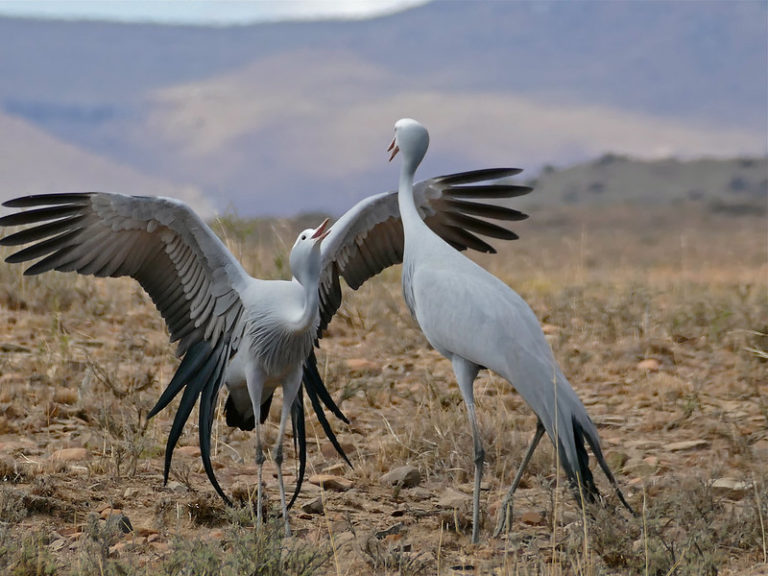
Credit: Bernard Dupont/Flickr Commons
IUCN Red List status: Vulnerable
The blue crane is South Africa’s national bird, and although there are small pockets and occasional breeding pairs found in neighbouring countries, they are mostly found in the Western Cape. Because they have a blind spot in the vision, they tend to collide with power lines and since they have very long, dangly legs, they get entangled in the wires.
Major threats
Habitat loss, collision with electric wires, poisoning.
Current conservation efforts
The Endangered Wildlife Trust has an active African crane conservation programme that aims to lessen the threats that face blue cranes, as well as wattled cranes, grey crowned cranes and black-crowned cranes. They’re working hard to implement ways of making power lines more visible to blue cranes. There’s more about blue crane conservation here.
How you can help
- Inform yourself about the blue crane, its habitat and the threats it faces by emailing [email protected] and requesting an information pack about the cranes.
- Donate to the Endangered Wildlife Trust’s African crane conservation programme.
6. Riverine rabbit
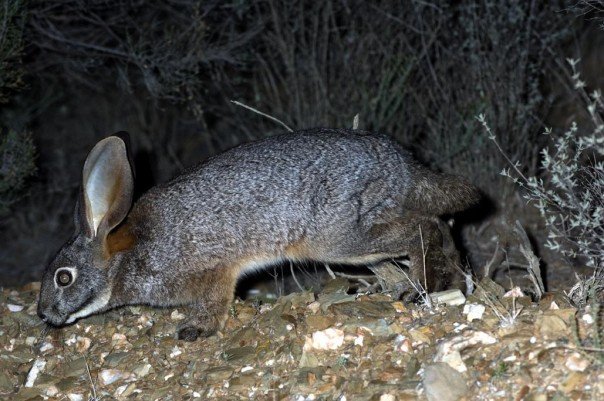
Credit: Tony Camacho/Wikimedia Commons
IUCN Red List status: Critically endangered
This little nocturnal rabbit can only be found in the Karoo regions and is currently the most endangered mammal in South Africa. It only lives in the deep silt flood plains of seasonal Karoo rivers and can’t be found anywhere else in the world, making it incredibly vulnerable to habitat loss.
Major threats
Loss of habitat due to cultivation and livestock farming
Current conservation efforts
The Endangered Wildlife Trust runs a very active riverine rabbit conservation programme that aims to conserve the biodiversity of the Karoo region. They also encourage private landowners to participate in conservation stewardship.
How you can help
- Contact the EWT if you live in the Karoo and you spot riverine rabbits. The more knowledge they have about their population and distribution, the easier it gets to protect them.
- Donate to the Riverine Conservation Programme.
7. Knysna seahorse
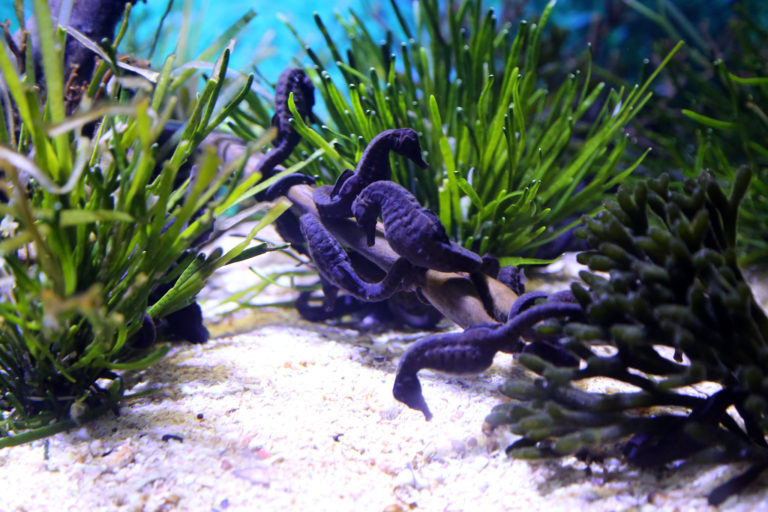
Credit: Flowcomm/Flickr Commons
IUCN Red List status: Endangered
This delicate little creature, with a head like a horse and a tail with a perfect curl, occurs naturally in three estuaries around the country, namely Knysna, Swartvlei, and Keurbooms. Unfortunately, the Knysna estuary is also very important to South Africa’s fishing industry and the major industrial developments are proving challenging for the seahorse’s survival. The continuous urban expansion is not helping either.
Major threats?
Habitat loss
Current conservation efforts?
SANParks are doing their bit to restrict further urban development around the Knysna estuary. The Knysna Basin Project has been researching a small field station since the early ’90s and their reports also contribute to a better-protected lagoon and estuary.
How you can help
- Make a donation to the Knysna Basin Project to encourage their research.
- Inform yourself about the state of the Knysna seahorse and discourage further urban development.
8. Golden mole
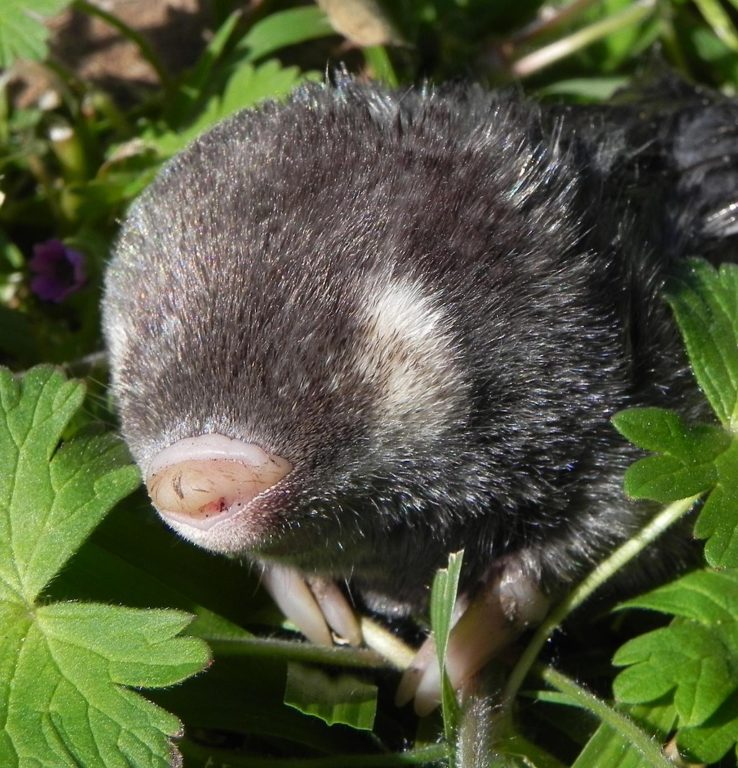
Credit: Henry De Lange/Wikimedia Commons
IUCN Red List status:
Endangered – Critically endangered
Golden Moles rank surprisingly high on the list of most endangered animals in South Africa; with five different species reaching the top ten most endangered mammals in the country. You may not see them often, but these tiny diggers are on their way to extinction.
Major threats?
The development (mining and agriculture) of South Africa’s grasslands.
Current conservation efforts?
Juliana’s golden moles are currently protected in the southwestern area of the Kruger National Park (Mpumalanga), and the Nylsvley Nature Reserve in the Northern Province. The University of Pretoria and Cape Town have both done extensive research on the habitat and survival of the golden moles.
How you can help
- Stay informed about mining developments in Mpumalanga.
- Report sightings on virtual museum platforms (for example, iSpot and MammalMAP), especially outside protected areas.
9. Yellow-breasted pipit

Credit: Wikimedia Commons/Joseph Smit
IUCN Red List status: Vulnerable
These cheerful-looking birds occur mostly in the highland grasslands of the Drakensberg, a beautiful region, but also South Africa’s most threatened grassland biome. They are endemic to South Africa, in the area near Dullstroom in Mpumalanga to the northern section of the Eastern Cape and also a small section of Lesotho.
Major threats?
Habitat loss due to commercial livestock farming in the areas where they stay
Current conservation efforts?
The Natal Drakensberg Park and other nature reserves give the yellow-breasted pipit a safe haven. The proposed Grassland Biosphere Reserve, centred around Volksrust and Wakkerstroom, is also estimated to hold a significant proportion of the global population.
How you can help
Join the EWT and donate or choose them as your beneficiary when you get a MyPlanet card, free of charge.
10. Oribi

Credit: Judy Gallagher/Wikimedia Commons
IUCN Red List Status: Least Concern, but decreasing
On an international scale, the oribi may not be very endangered, but it’s actually one of the most endangered antelope that roam the South African plains. It’s called a specialist grazer because it doesn’t eat just any type of grass and therefore it’s incredibly vulnerable to habitat loss.
Major threats?
Habitat loss and illegal hunting (poaching)
Current conservation efforts?
There exists an illegal hunting forum to assist with illegal hunting and poaching issues. An Oribi Working Group has been established within the Endangered Wildlife Trust to focus on their specific habitats and on conserving them.
How you can help
Join the EWT or choose them as your beneficiary when you get a MyPlanet card, free of charge.
ALSO READ: Women rangers are protecting wildlife in Africa’s poaching hotspots









